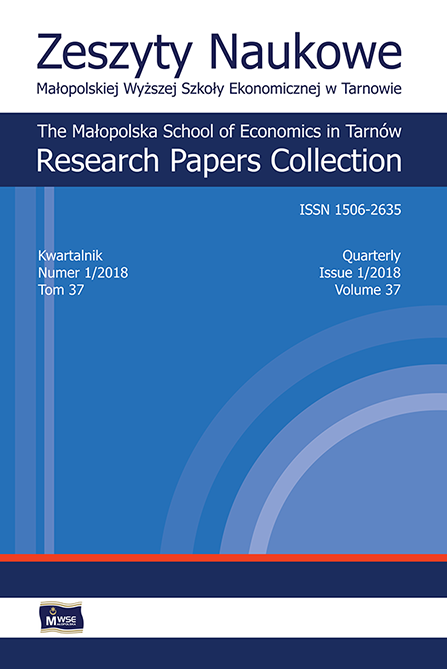Abstract
The aim of this article is to give a general overview of the political, economic and social changes in Poland between 1989 and 2017 and to identify the main short and medium term challenges for Poland. Its formulation will be based on the following indicators: transformations (Washington Heritage Foundation and Wall Street Journal), economic freedom (European Bank for Reconstruction and Development) and economic growth (GDP and GDP p.c.). The analyses presented in this article, in particular comparisons with France, Romania, Germany, the USA and the countries of the Visegrad group show that this period of the history of the Third Republic of Poland being discussed can be compared to the Glorious Thirty years which took place in the post war history of the Western Europe. In conclusion it was stated that the further development of Poland, in a short and middle time perspective, primarily depends on improving the quality of the institutional order, respect for the law and the principles of democracy as well as avoiding the middle income trap.
References
Fourastié, J. (1979). Les Trente Glorieuses: ou, La Révolution invisible de 1946 à 1975. Paris: Fayard. ISBN 2213006830.
View in Google Scholar
Gomułka, S. (2016). Transformacja i rozwój. Teoria i polityka gospodarcza. Warszawa: Wydawnictwo Naukowe PWN. ISBN 9788301184643.
View in Google Scholar
Index of Economic Freedom. (2018). [online, dostęp: 2018-01-14]. Washington: The Heritage Foundation. Dostępny w Internecie: https://www.heritage.org/index/explore?view=by-region-country-year.
View in Google Scholar
Kornai, J. (1984). Socialisme et l’économie de la pénurie. Paris: Economica. ISBN 2717808140.
View in Google Scholar
La Banque Européenne pour la Reconstruction et le Développement. (2018). [Europejski Bank Odbudowy i Rozwoju; online, dostęp: 2018-01-14]. Dostępny w Internecie: http://www.ebrd.com/fr/home.
View in Google Scholar
La Banque mondiale. (2018). [Bank Światowy; online, dostęp: 2018-01-14]. Dostępny w Internecie: https:// donnees.banquemondiale.org/.
View in Google Scholar
Malaga, K. (2011). The main strands and dilemmas of contemporary economic growth theory. Argumenta Oeconomica, 1(26), 17−42.
View in Google Scholar
Malaga, K. (2014). Les dilemmes de la théorie de la croissance économique versus la théorie de la croissance unifiée d’Oded Galor. Studia Oeconomica Posnaniensia, 2(12), 121−145.
View in Google Scholar
Nölke, A., Vliegenthart, A. (2009). Enlargement the varieties of capitalism. The emergence of dependent market economies in East Central Europe. World Politics, 61(4), 670–702.
View in Google Scholar
© Copyright by Małopolska School of Economics in Tarnów. The articles are available under the Creative Commons Attribution NonCommercial-NoDerivatives 4.0 International License


